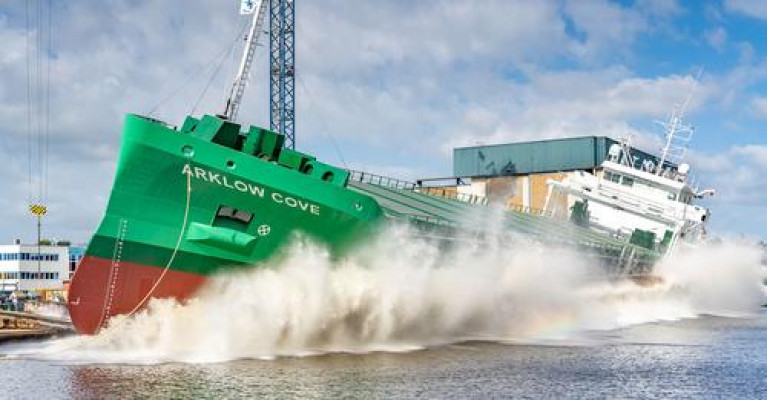Displaying items by tag: Graintrader
C Class Coaster 'Cove' Is Latest Launched Arklow Newbuild
At the weekend Arklow Cove was launched from a Dutch shipyard that now brings to the ninth newbuild of 10 'C' class coasters on order by the Co. Wickow shipowner, writes Jehan Ashmore.
The sideways launch of Arklow Cove at the Westerbroek shipyard of Ferus Smit, took place on Saturday and once again the 5,054dwat class involved a new ship name for Arklow Shipping Ltd.
Likewise of Irish-flagged C class fleetmates, the newbuild will be towed on the canal waterway to Eemshaven to undergo sea trials in the North Sea.
Arklow Cove has a volume of 220.000cft and carrying capacity over 5000 deadweight tons. Typical cargoes of the handy sized coaster will involve loading grain into a single-hold just shy of 60m within a hull length overall (LOA) of 87.40m.
The newbuild has a 1A iceclass notation and is propelled by a 1,740 kW MaK engine with a single ducted propeller.
The 2,999grt coaster marks the continues upgrading of ASL's Irish and Dutch flagged fleet of 55 vessels comprising mostly of short-sea traders and several deep-sea bulkers that also trade beyond northern Europe.
Among the fleet is the dwindling R class coasters of which just four remain plying their trade with the oldest member of this former 16-strong class, Arklow Rainbow dating to 2006.























